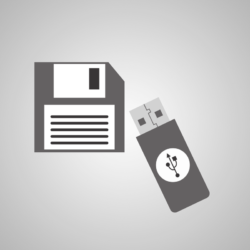
Humans have been using tools to help make their lives easier since the dawn of time. Computers are arguably the most useful tool humans have ever invented. Very early versions of computing devices were created to help people make calculations, like the abacus or other calculators. These early tools helped other inventors develop machines that more closely resemble today’s computer.
In 1801, Joseph Marie Jacquard invented a loom that could weave fabric designs based on instructions it received from a punch card. Later, this punched card system was used in other computers like Herman Hollerith’s machine which processed punched cards to collect US census data. The company Hollerith founded, the Tabulating Machine Company, would eventually become the International Business Machines Corporation which we know today as IBM.

Alan Turing designed a device he called the “universal machine” in 1936 which was capable of “computing anything that is computable”. The universal machine was used in World War II to decipher encrypted Nazi messages from the ENIGMA machine. Turing’s machine helped win WWII, and was later used as the central idea behind the modern computer.

In 1943, two professors from the University of Pennsylvania, John Mauchly and J. Presper Eckert, built what is now considered to be the grandfather of digital computers. It was huge, 20 feet by 40 feet, and had 18,000 vacuum tubes. A few years later, they left the university to build their computers for commercial and government use.

Small, but vitally important inventions were created throughout the mid-1900s. For instance, in 1947, three men with Bell Laboratories (William Shockley, Walter Brattain, and John Bardeen) discovered how to use an electric switch instead of a vacuum. In 1953, a woman named Grace Hopper invented the first computer language called COBOL. In 1958, Jack Kilby and Robert Noyce created the computer chip.

The earliest “personal computers” were created in the late 1970s, although they didn’t quite gain traction until the 1980s. This is partly because those early PCs weren’t exactly usable and accessible for the general public. They were marketed for people in the computer science industry. In 1981, IBM released their first PC named Acorn. It was sold by Sears & Roebuck.

Apple wasn’t far behind in the PC market, having already created multiple computers in the years prior. Apple’s first PC was named Lisa, and it was released in 1983. It didn’t do well, but it led to the development of Macintosh, which did.

Since the 1980s, computers have made exponential leaps in design and function. Inventions like the Internet, WiFi, stronger and faster processors, smartphones, tablets, and wearable technology continue to advance computer technology year after year. What’s next?




